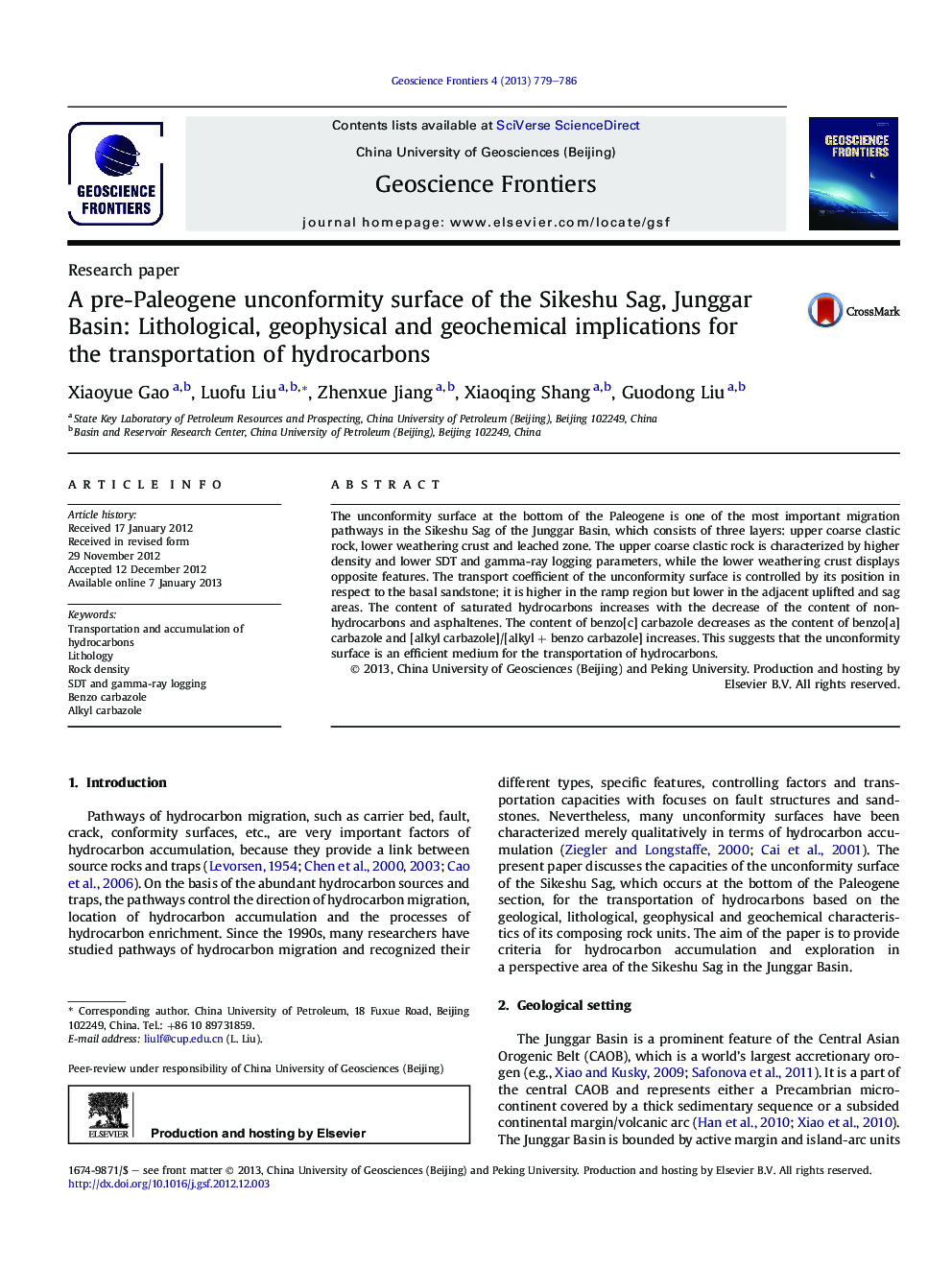| کد مقاله | کد نشریه | سال انتشار | مقاله انگلیسی | نسخه تمام متن |
|---|---|---|---|---|
| 4681658 | 1348864 | 2013 | 8 صفحه PDF | دانلود رایگان |

The unconformity surface at the bottom of the Paleogene is one of the most important migration pathways in the Sikeshu Sag of the Junggar Basin, which consists of three layers: upper coarse clastic rock, lower weathering crust and leached zone. The upper coarse clastic rock is characterized by higher density and lower SDT and gamma-ray logging parameters, while the lower weathering crust displays opposite features. The transport coefficient of the unconformity surface is controlled by its position in respect to the basal sandstone; it is higher in the ramp region but lower in the adjacent uplifted and sag areas. The content of saturated hydrocarbons increases with the decrease of the content of non-hydrocarbons and asphaltenes. The content of benzo[c] carbazole decreases as the content of benzo[a] carbazole and [alkyl carbazole]/[alkyl + benzo carbazole] increases. This suggests that the unconformity surface is an efficient medium for the transportation of hydrocarbons.
Figure optionsDownload as PowerPoint slideHighlights
► The Paleogene Sikeshu unconformity surface consists of upper clastic, lower weathered and leached beds.
► The transport coefficient of the unconformity surface is higher at ramp and lower in uplift/sag.
► The unconformity surface provides efficient hydrocarbon transportation and accumulation.
Journal: Geoscience Frontiers - Volume 4, Issue 6, November 2013, Pages 779–786